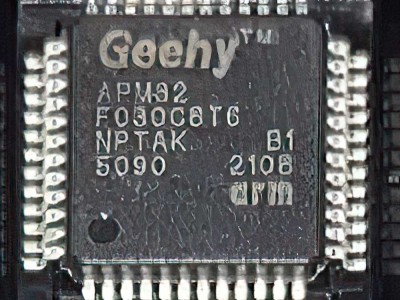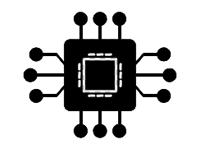The NEO-M8N-0-10 GPS module is a popular choice among hobbyists and engineers for its accuracy, reliability, and versatile functionality. However, like any advanced technology, users may face issues when integrating or using this GPS module. This article explores common problems with the NEO-M8N-0-10 GPS module and provides practical solutions to help you troubleshoot effectively.
NEO-M8N-0-10, GPS module, troubleshooting, solutions, accuracy, GPS signal, antenna , Communication issues, GPS module installation, error codes, GPS reception
Common NEO-M8N-0-10 GPS Module Issues and How to Solve Them
The NEO-M8N-0-10 GPS module is widely known for its high-performance, providing accurate positioning data in real-time. It's widely used in applications ranging from navigation systems, drones, robotics, and IoT devices. However, users may occasionally encounter issues when working with this module, which can be frustrating and delay project timelines. This section will explore some of the most common issues encountered with the NEO-M8N-0-10 GPS module and provide straightforward troubleshooting solutions.
1. GPS Module Not Receiving Signal
One of the most common issues with the NEO-M8N-0-10 module is it failing to acquire a GPS signal. This is especially common in indoor environments or when the antenna is not properly positioned.
Possible Causes:
Weak Satellite Signal: GPS modules require a clear line of sight to the sky to acquire a satellite signal. When the module is indoors or obstructed by physical objects, it may struggle to lock onto the satellites.
Antenna Issues: A defective or improperly connected antenna can prevent the GPS module from receiving signals.
Power Issues: In some cases, low power supply or fluctuations in voltage can cause the GPS module to fail in acquiring the satellite signal.
Solutions:
Ensure Line of Sight to the Sky: If possible, take the GPS module outside or ensure it is placed near a window or a place where it has a direct view of the sky. This will help the module acquire signals from the GPS satellites.
Check the Antenna Connection: Verify that the antenna is securely connected to the GPS module. A loose connection can severely affect the signal strength.
Use an External Antenna: If you are using a standard onboard antenna, consider switching to an external, high-performance antenna designed to work with the NEO-M8N-0-10 module. This can significantly improve the reception quality, especially in environments with weak GPS signals.
2. GPS Data Output is Inaccurate or Unstable
Another frequent issue is when the GPS module outputs inaccurate or fluctuating data, such as inconsistent latitude, longitude, or altitude values. This can cause problems in applications like navigation systems or unmanned aerial vehicles (UAVs) where precise location data is crucial.
Possible Causes:
Insufficient Satellite Fix: The GPS module might not have locked onto enough satellites, which is required for accurate positioning. It is generally recommended to have a fix on at least 4-6 satellites for optimal accuracy.
Incorrect Baud Rate or Communication Settings: Mismatched settings between the GPS module and the receiving system (e.g., microcontroller or computer) can lead to corrupted or unstable data.
Multipath Effect: GPS signals can bounce off tall buildings or other large surfaces, causing delays and inaccuracies in signal reception.
Solutions:
Wait for a Stable Fix: After powering on the GPS module, give it a few minutes to acquire a stable satellite fix. If it hasn’t locked onto enough satellites, the data may not be reliable.
Adjust Baud Rate and Settings: Ensure that the baud rate and other communication settings (e.g., NMEA message format) match on both the GPS module and the receiving system. Mismatched settings can lead to corrupted data.
Improve Satellite Visibility: If you're in a dense urban area with high-rise buildings or other obstacles, try to move to an open area to improve the GPS module's ability to lock onto more satellites. Avoid using the GPS module near large metal structures that might interfere with signal reception.
3. GPS Module Not Powering On
If the NEO-M8N-0-10 GPS module fails to power on, it can halt progress on any project that depends on it. Power-related issues are common, especially when the module is not properly integrated into the circuit.
Possible Causes:
Incorrect Power Supply Voltage: The NEO-M8N-0-10 GPS module operates on a 3.3V to 5V power supply. If the power supply is unstable or outside this range, the module may fail to power on.
Connection Issues: If the power lines are not properly connected, or if there is a loose wire or solder joint, the GPS module will not receive power.
Solutions:
Verify the Power Supply: Double-check the power supply voltage to ensure it is within the recommended range of 3.3V to 5V. Using a multimeter, measure the voltage at the GPS module’s VCC pin to confirm it is receiving sufficient power.
Check Connections: Inspect the power connections to ensure the VCC, GND, and other relevant pins are securely connected. If you are using a breadboard, check that the pins are properly seated and making good contact.
4. No Fix or Slow Fix Times
Sometimes, users report that their GPS module does not provide a position fix or takes an unusually long time to do so. This can severely affect real-time applications like navigation.
Possible Causes:
Weak Signal Reception: As mentioned earlier, weak or obstructed signals can prevent the GPS module from acquiring a position fix in a timely manner.
Cold Start: The first time you power on a GPS module (cold start), it may take longer to acquire a fix because the module has to download the almanac data for satellite positions.
Outdated Firmware: Outdated firmware on the GPS module may cause it to perform poorly in terms of fix times.
Solutions:
Warm Start: If the GPS module supports it, performing a warm start (with cached position data) may result in faster acquisition times. Ensure that the GPS module has previously been powered on and has stored the almanac data.
Ensure Clear Sky Visibility: A direct line of sight to the sky is essential for faster fix times. Move the GPS module to an open space where it has minimal obstructions.
Update Firmware: Check the manufacturer's website for any firmware updates and ensure that your module is running the latest version. Firmware updates can address issues related to fix times and signal handling.
5. Interference with Other Electronics
In some cases, electromagnetic interference ( EMI ) from nearby electronic devices can cause the GPS module to behave erratically, lose signal, or provide inaccurate data.
Possible Causes:
Electromagnetic Interference: Devices like motors, wireless transmitters, or other electronics in close proximity to the GPS module may cause EMI that disrupts the GPS signal.
Incorrect Grounding: Poor grounding of the GPS module or the circuit it's connected to can lead to noisy data.
Solutions:
Increase Distance from Potential Sources of Interference: Move the GPS module away from devices that may be emitting electromagnetic noise. This includes motors, power supplies, or high-frequency electronics.
Use Shielding: To minimize interference, consider using shielding (e.g., Faraday cages) around the GPS module or the entire device to block EMI.
Proper Grounding: Ensure that the ground connections are properly made and that the GPS module is grounded through a stable and low-resistance path.
Advanced Troubleshooting Tips and Maintenance for the NEO-M8N-0-10 GPS Module
The second part of this guide will dive deeper into some advanced troubleshooting techniques and maintenance strategies for ensuring that your NEO-M8N-0-10 GPS module continues to perform reliably. By addressing complex issues and providing maintenance tips, this section aims to enhance the longevity and accuracy of the GPS module.
6. GPS Module Not Communicating with Microcontroller
If your NEO-M8N-0-10 GPS module is not communicating with the microcontroller (e.g., Arduino, Raspberry Pi), the issue could stem from several areas, including wiring, software, or configuration problems.
Possible Causes:
Incorrect Wiring: Mismatched wiring between the GPS module and the microcontroller can prevent communication.
Software or Code Issues: If the communication protocol (e.g., UART, I2C) is not correctly configured in the code, the GPS module may fail to send data to the microcontroller.
Faulty Drivers : If you're working with a computer or a laptop, incorrect or missing Drivers can prevent communication between the GPS module and the operating system.
Solutions:
Check Wiring: Double-check the wiring between the GPS module and the microcontroller, ensuring that the TX (transmit) pin of the GPS is connected to the RX (receive) pin on the microcontroller, and vice versa. Ensure that the ground pin is also properly connected.
Verify Communication Settings: Make sure that the baud rate and other communication settings are properly configured in the code running on the microcontroller. Mismatches here can cause communication errors.
Install Drivers: If you're working with a computer, ensure that the correct USB-to-serial drivers are installed to allow communication with the GPS module.
7. Firmware Recalibration and Troubleshooting
Sometimes the issue with the GPS module may stem from a firmware problem or the need for recalibration.
Possible Causes:
Outdated or Buggy Firmware: Firmware bugs can affect the accuracy and functionality of the GPS module.
Lost Calibration Data: If the module has been exposed to extreme conditions or handled improperly, calibration data may be lost, affecting the module’s ability to lock onto satellites accurately.
Solutions:
Recalibrate the Module: If you suspect calibration issues, you may need to reset the module’s internal settings. You can do this by sending specific commands via a serial interface to reset or recalibrate the module.
Update Firmware: Regularly check for firmware updates on the manufacturer's website. Ensure you are using the latest firmware to minimize bugs and improve overall performance.
8. Environmental Considerations and Care
Lastly, keeping your GPS module in optimal conditions can prevent most common issues and ensure longevity.
Possible Causes:
Environmental Factors: Extreme temperatures, moisture, or dust can affect the performance of the GPS module.
Physical Damage: Dropping the module or exposing it to moisture may damage internal components.
Solutions:
Store in Ideal Conditions: Always store the GPS module in a dry, cool place, and avoid exposing it to moisture or dust. When working outdoors, consider using waterproof enclosures.
Avoid Physical Shock: Handle the GPS module carefully and avoid dropping it. If necessary, place it in protective casing.
By following these troubleshooting and maintenance tips, you can ensure that your NEO-M8N-0-10 GPS module remains reliable and accurate for a variety of applications.
(Partnering with an electronic component supplier) sets your team up for success, ensuring that the design, production and procurement processes are streamlined and error-free. (Contact us) for free today


